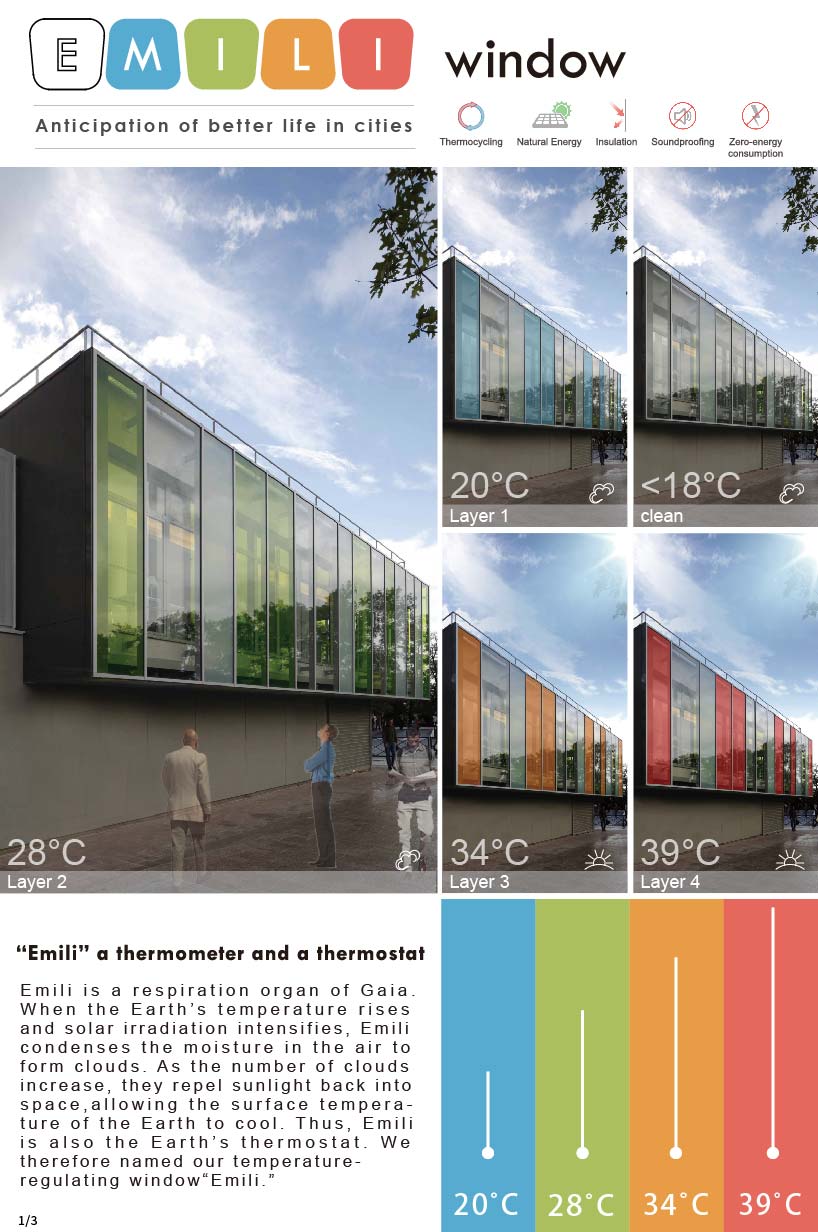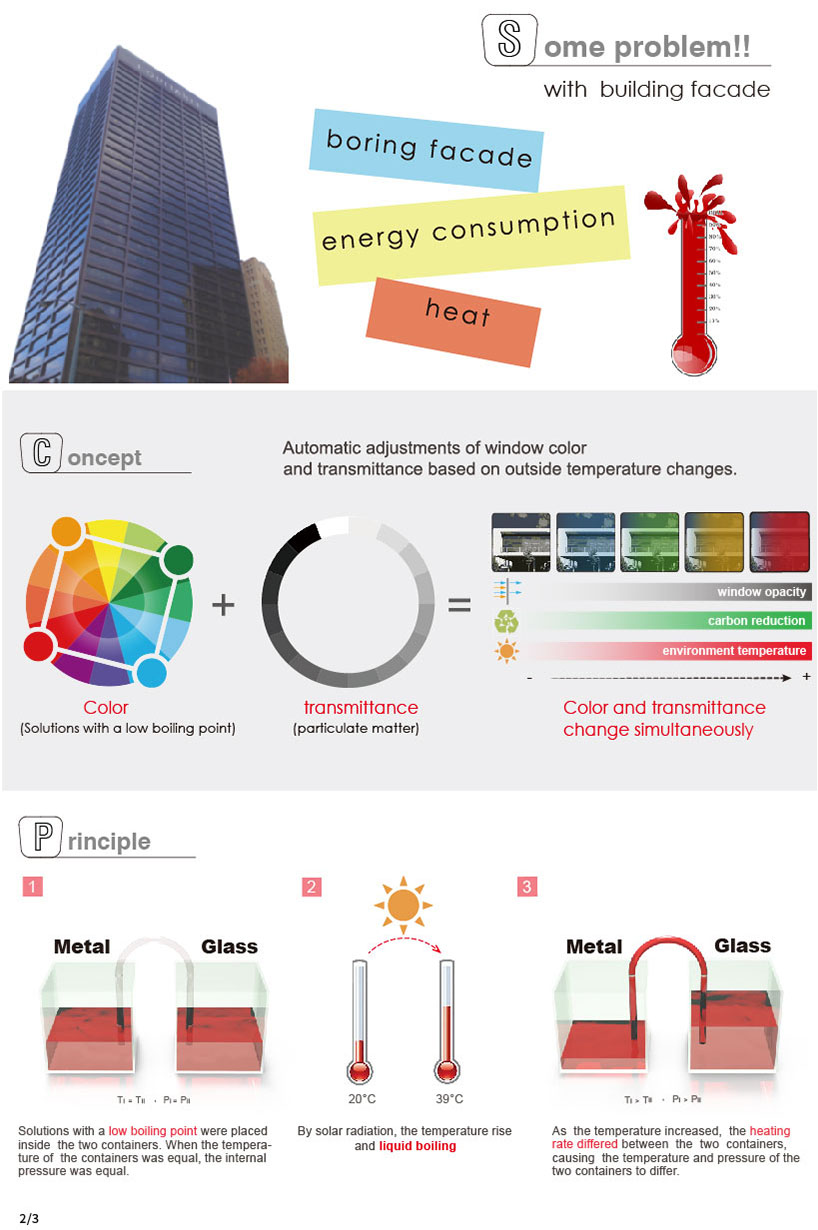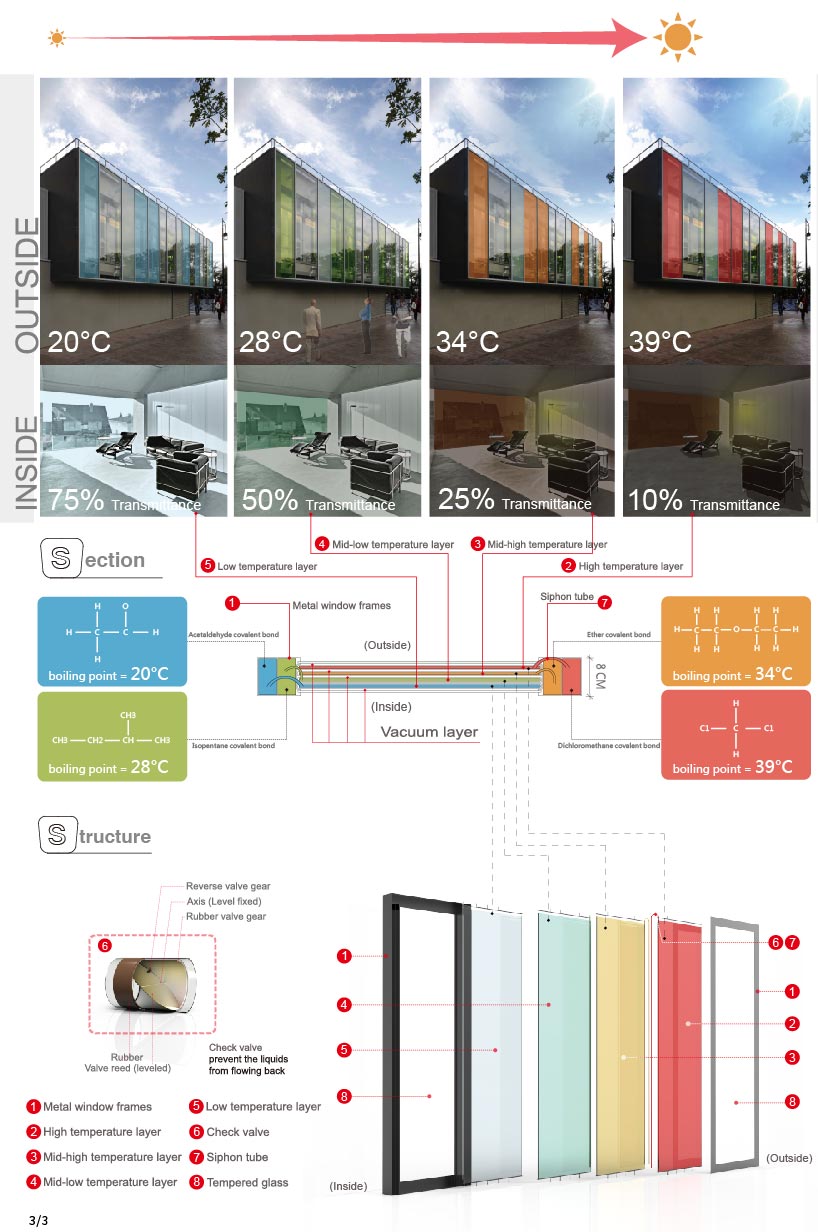
Emili Window by Yu Chin from taiwan
designer's own words:
Emili is a playful elf, a rainbow that stretches across the sky, and the respiration organ of Gaia. When the Earth’s temperature rises and solar irradiation intensifies, Emili condenses the moisture in the air to form clouds. As the number of clouds increase, they repel sunlight back into space, allowing the surface temperature of the Earth to cool. Thus, Emili is also the Earth’s thermostat. We therefore named our temperature-regulating window “Emili.”
The word “Anticipation” has a feeling of happiness and a premonition that something good will happen in the future. With the sudden changes in environment and climate, sustainability has become the future. This may be the key to survival for our future world. This is the time we hope to attain our goals of saving energy, reducing carbon footprint and increase delightfulness of city life through a simple method.
Needs:
During these few years, the demand for glass curtains for building facade has increased but it has poor heat-insulating properties causing many buildings to consume a lot of power for air conditioning in order to maintain comfortable working or living environment.
Solution:
The Emili window automatically controls the luminous flux entering a room based on changes in the surrounding environment. As the temperature increased, the transmittance decreased. This blocked external heat sources and the sun’s infrared light, thereby achieving the desired effect of cooling the inside of the buildings and meeting the objective of reduced air-conditioning power consumption. As the temperature decreased, the transmittance increased. This allowed sunlight to penetrate into the building, thus increasing the room temperature and reducing heater power consumption.
Differentiation:
The Emili window features excellent heat and sound insulation. The window is composed of four layers of glass and five layers of vacuum. Liquid is added to the glass layer when a certain temperature has been reached. This temperature is based on the glass layer’s boiling point. Each color represents a distinct photic zone, in which the transmittance was automatically adjusted as the temperature changed. To prevent liquid vapor from continually pouring from the metal trough into the glass layer (creating constant window waves) and prevent the liquids from flowing back into the metal trough before the liquid evaporation temperature has been reached, we installed a check valve in the connection tube.
Benefits:
Emili window can create a building with dynamic facade and increasing different levels of visual effects. It can be used in various locations such as the outer layer of buildings and public facilities to automatically regulate temperature, thereby achieving energy conservation and carbon reduction.

